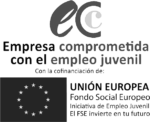The fashion industry is one of the strongest in Spain. In 2015 and 2016 it was consolidated thanks to the economic recovery, which has improved households' disposable income. The number of companies in 2016 related to the textile, clothing, leather and footwear sector rose for the first time in thirteen years..
The fashion business in Spain today is very different from two decades ago. The industrial structure is much smaller than before, and there is a strong trend towards internationalisation. In addition, distribution companies have more weight than production companies.
We are talking about one of the most dynamic industries, with innovation every few months to bring new collections to the market, renewing shops and shop windows to attract the consumer; innovative marketing campaigns are also presented and Internet commerce is increasingly promoted.
How the Industry behaves in Fashion
The contribution of the fashion business to the Spanish economy accounts for 2.8% of Spain's GDP and is one of the most important economic sectors.
The percentage contribution of fashion to the GDP of the Spanish retail sector is 13.8% in 2016, and the percentage in which it contributes to industry in Spain is 5.6%. This sector contributes 4.3% of employment.
At the beginning of 2015, there were 19,494 companies in the textile, clothing, leather and footwear sectors in Spain, with 133,780 employees, which implies a growth of 3.7%.
We are talking about a favourable development, but it is still far from the level of employment that existed before the liberalisation of international textile trade in 2005.
The occupation of the fashion industry rose for the first time in 2014 and closed 2015 and 2016 with more than 140,000 employees.
By industry, leather and footwear continues to gain importance in employment generation, with 33% of the total, compared to textiles, with 32%, and clothing, with 35%.
On the other hand, the self-employed again gained weight during 2015, increasing their number by 3.7% to 22,499, representing 16.26% of jobs in the sector.
As a curious fact, women lead job creation in 2016. The positive change in the business climate and the improvement in financing have generated the launch of investment projects by companies, which had been put on hold due to the crisis. The volume of textile machinery imports grew by 30% in 2014, and by 20% in 2015.
The growth of investments in logistics activities and organisational improvements in companies is noteworthy.





